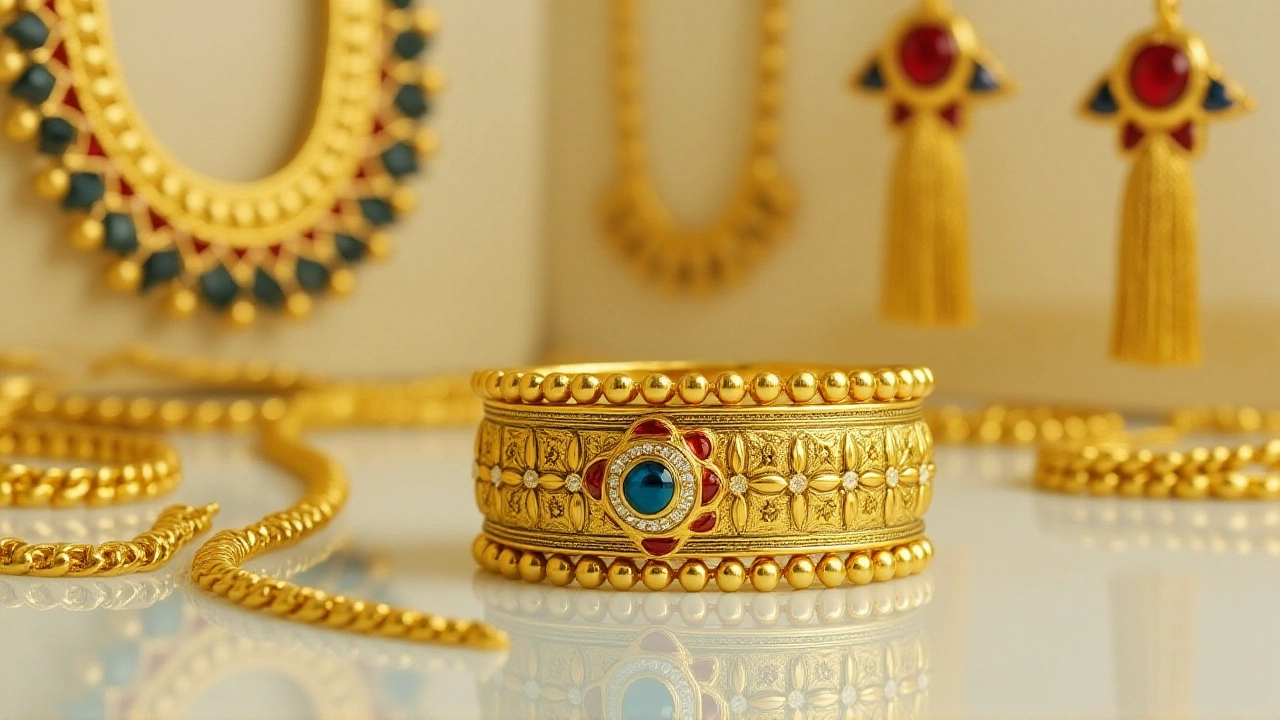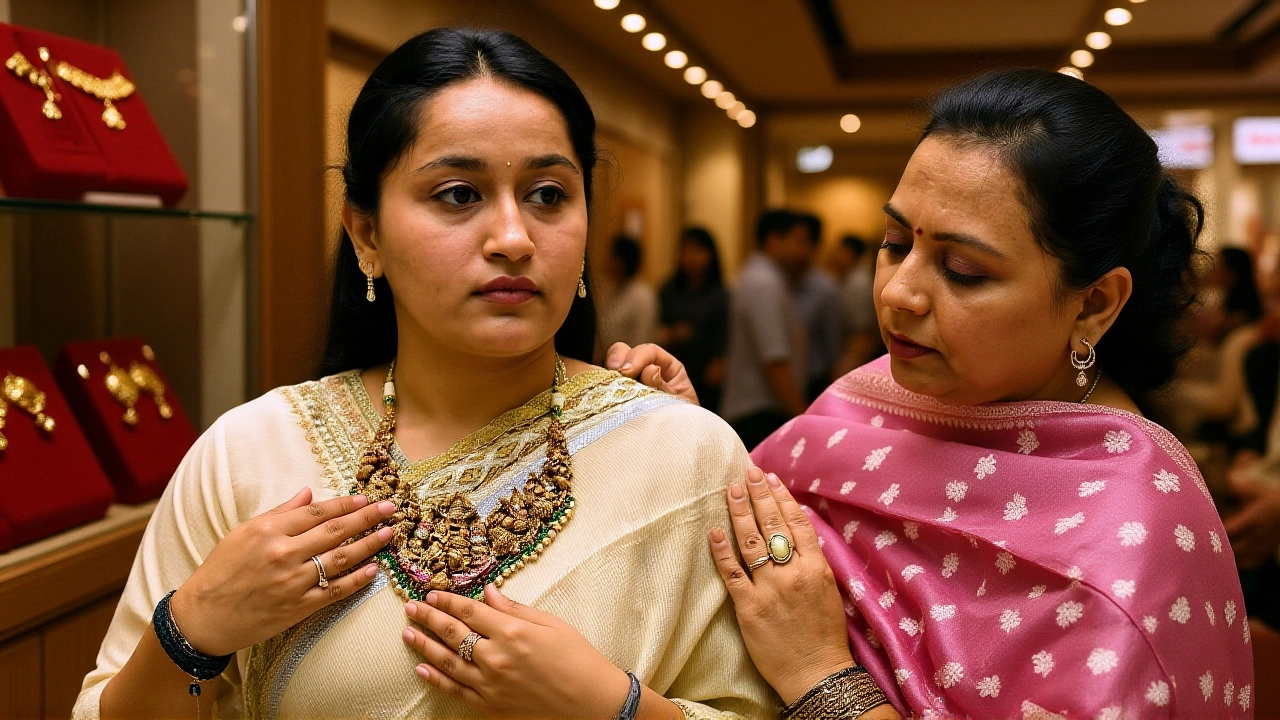Gold prices have vaulted to Rs 1,34,800 per 10 grams on Dhanteras 2025India, setting a new record just as the two‑day festival kicks off. The surge, roughly 65% higher than a year ago, is turning what is usually a buying bonanza into a nervous wait‑and‑see for many shoppers. Gold prices are edging toward the psychologically significant Rs 1.3 lakh mark, while silver isn’t far behind, hovering around Rs 1.77 lakh per kilogram.
Background: Dhanteras and India’s Gold Tradition
Dhanteras, also called Dhantrayodashi, marks the start of Diwali celebrations and is dedicated to Goddess Lakshmi, Lord Dhanvantari, and Lord Kubera. Historically, families rush to buy gold, silver, and new utensils, believing the auspicious "muhurat" hours will bring prosperity. This year, the muhurat windows are tightly defined: Pradosh Kaal from 05:59 PM to 08:25 PM and Vrishabha Kaal from 07:39 PM to 09:41 PM on October 18, with the Trayodashi Tithi spanning 12:18 PM on the 18th to 01:51 PM on the 19th.
Price Surge: Numbers and Why
National Capital Market data shows 24‑carat gold at Rs 1,34,800 per 10 g, up from Rs 81,400 during Dhanteras 2024. Silver, often the quieter cousin, is quoted at Rs 1,77,000 per kilogram by some market reports, while others list Rs 1,64,660/kg. The spike mirrors global trends: geopolitical tension, lingering inflation, and tighter monetary policies have all pushed bullion higher.
For context, a gram of 22‑karat gold in Delhi now costs Rs 12,210 at Tanishq, while Malabar Gold & Diamonds, Joyalukkas, and Kalyan Jewellers are pricing similar pieces at Rs 11,995 per gram across metros like Mumbai, Bengaluru, and Ahmedabad. These figures are base rates; making charges and taxes can add 10‑15% on top.
Jeweller Strategies and Consumer Response
Despite the price shock, the industry isn’t folding. Rajesh Rokde, chairman of All India Gem and Jewellery Domestic Council remains upbeat: "The GJC expects gold sales to increase by 40‑45% in value terms year‑on‑year," he told reporters on Saturday. He adds that the weekend Dhanteras should boost footfall, especially during the muhurat period.
Retailers are playing both sides. Some offer limited‑time discounts on designs that carry lower making charges, while others push online flash sales to win over price‑sensitive buyers. In Delhi, flagship stores reported a 12% rise in foot traffic compared with the previous year, but average transaction weight fell by about 8%.
Market Outlook and Expert Opinions
Analysts at Kotak Mahindra Securities note that the 65% price climb over the past twelve months is unlikely to reverse soon. "Unless there’s a major shift in global monetary policy, we’ll continue to see gold at elevated levels," said senior analyst Priyanka Sharma. She also points out that rising prices could shift consumer preference toward gold coins and small‑size jewellery, which offer better value per rupee.
Conversely, a survey by the Indian Institute of Materials suggests that the current price environment may accelerate the shift to digital gold platforms, where buyers can purchase fractional ounces without the hassle of storage.

Potential Ripple Effects on the Economy
Gold isn’t just a decorative metal; it’s a de‑facto savings instrument for many Indian households. The higher price means that the total value of gold sold during the festival could still rise, even if fewer grams change hands. This paradox could bolster the jewellery sector’s turnover, supporting employment in manufacturing hubs like Surat.
However, the downside is the possible dampening of discretionary spending on other Diwali items, such as electronics and apparel. Retail analysts warn that a prolonged period of high bullion prices could tighten overall festive consumption, pressuring non‑gold retailers.
- Gold price on Dhanteras 2025: Rs 1,34,800/10 g (24 ct)
- Silver price: Rs 1,77,000/kg (peak estimate)
- Projected value‑growth in gold sales: 40‑45% YoY
- Expected volume drop: up to 15% versus 2024
- Key muhurat windows: 05:59‑08:25 PM & 07:39‑09:41 PM (Oct 18)
What's Next: Watching the Market Move Forward
The next few weeks will test whether the high‑price optimism holds. If the post‑Dhanteras period shows steady online sales, it could signal a new buying pattern: consumers preferring smaller, more affordable pieces or moving toward digital gold. Keep an eye on RBI policy statements; any hint of easing could nudge prices down, reviving the classic gold rush.
Frequently Asked Questions
How will the record gold price affect middle‑class families?
Many middle‑class families treat gold as a safe‑haven asset. With prices at Rs 1.35 lakh per 10 g, they may delay purchases or opt for smaller items, such as gold coins, to preserve buying power while still building a hedge against inflation.
What drives the current surge in gold and silver prices?
Global factors dominate: geopolitical tensions in the Middle East, sustained high inflation, and central banks tightening monetary policy. Domestically, a strong rupee and robust demand during festival seasons also push prices higher.
Will the jewellery industry see profit despite lower sales volume?
Yes, according to the All India Gem and Jewellery Domestic Council, the value of gold sold could still rise by 40‑45% year‑on‑year, offsetting the expected 10‑15% drop in gram‑volume. Higher price points translate into higher turnover for retailers.
How are online platforms influencing festive gold purchases?
E‑commerce sites are offering instant delivery and the ability to buy fractional gold, appealing to price‑sensitive consumers. Early data shows a 22% increase in online gold orders compared with last year’s Dhanteras period.
What could bring down gold prices before the next Diwali?
A shift in global monetary policy, such as major central banks easing interest rates, could lower bullion prices. Additionally, a stabilization of geopolitical hotspots would reduce safe‑haven demand, potentially easing the upward pressure.
